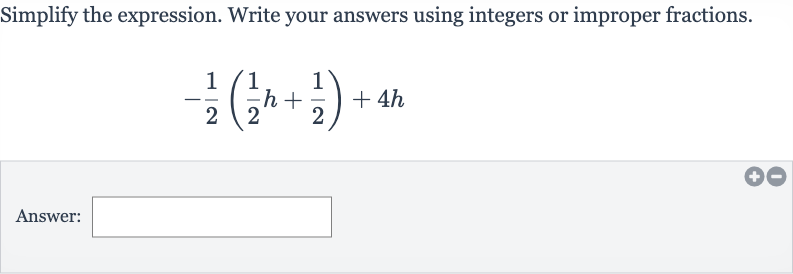Full solution
Q. Simplify the expression. Write your answers using integers or improper fractions.Answer:
- Distribute and Simplify: First, distribute the negative one-half across the terms inside the parentheses.
- Simplify Fractions: Now, simplify the multiplication of the fractions.
- Combine Terms: Combine the simplified terms with the term that is outside the parentheses.
- Add Like Terms: Combine like terms by adding and .
- Final Simplified Expression: Now, bring down the constant term . The final simplified expression is .

